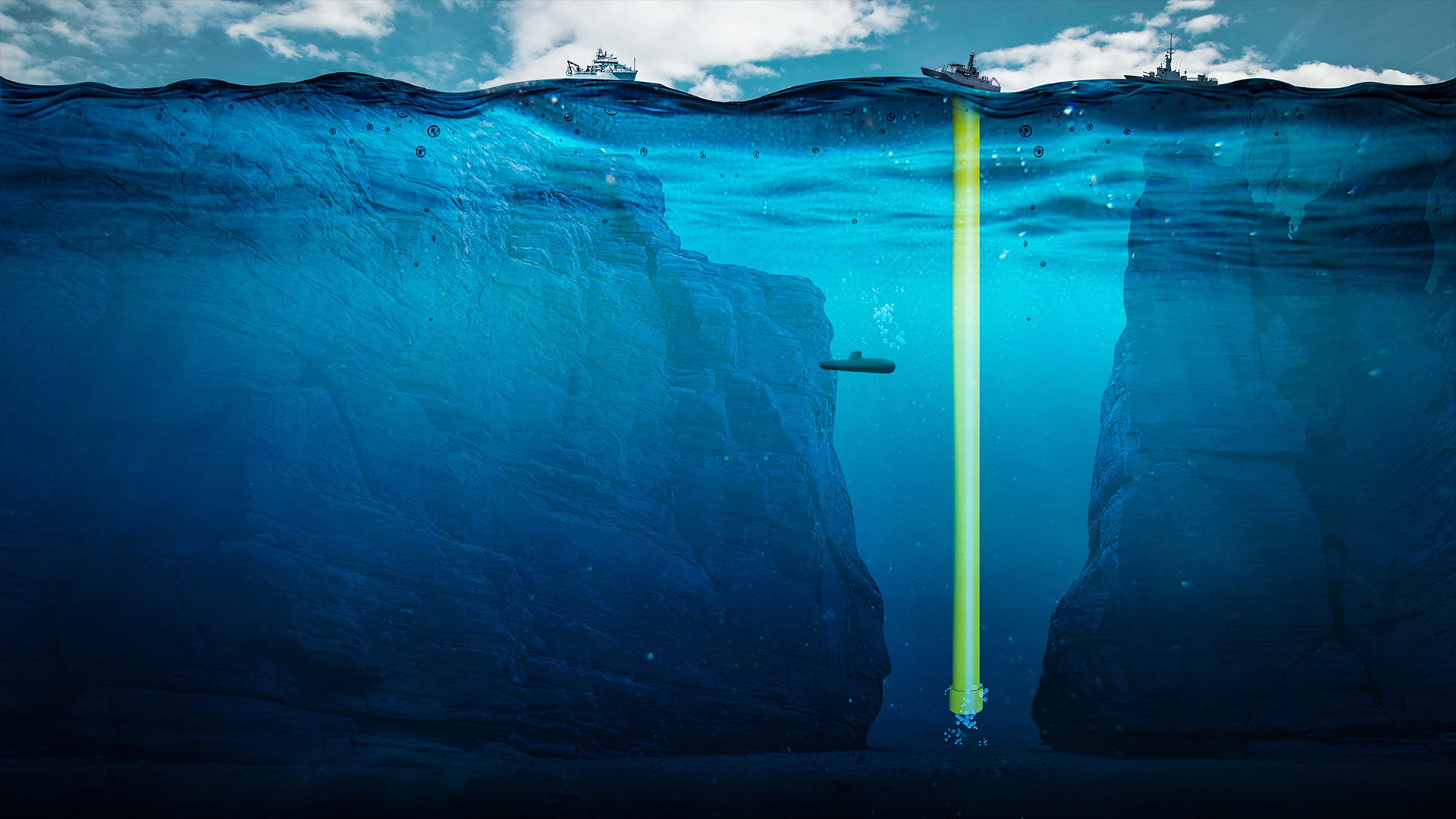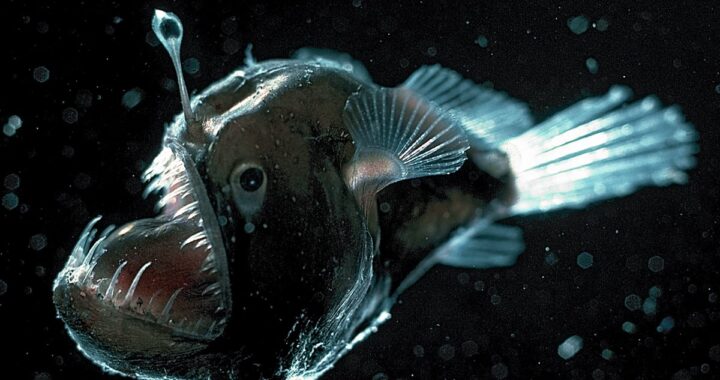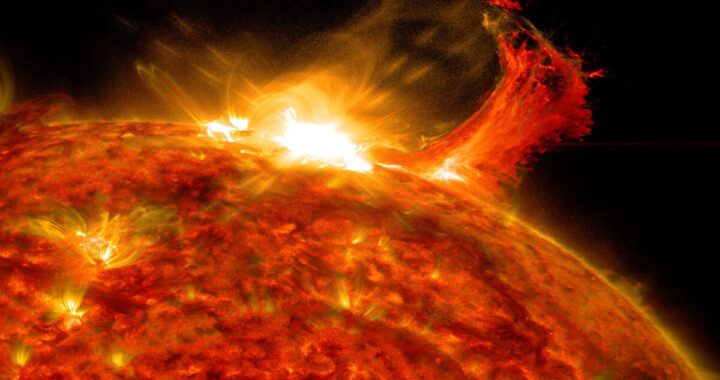How Deep is the Mariana Trench?

Imagine a vast, nearly unexplored abyss that plunges deeper into the Earth’s crust than any other point on the planet. A place where the immense pressure would instantly crush any human explorer, and where the darkness is so complete that even the faintest glimmer of light cannot penetrate. This is the Mariana Trench, a geological marvel that has captured the imaginations of scientists and adventurers alike for decades.
The Mariana Trench: A Dive into the Unknown

Situated in the western Pacific Ocean, east of the Mariana Islands, the Mariana Trench is a crescent-shaped submarine trench that stretches for nearly 1,600 miles (2,550 km) and reaches a mind-boggling maximum depth of approximately 35,876 (10,994 meters) below sea level. To put this staggering depth into perspective, if you were to place Mount Everest at the bottom of the Mariana Trench, its peak would still be over a mile (1.6 km) below the surface of the ocean.
This awe-inspiring trench is not only the deepest point in the world’s oceans but also the deepest location on Earth. It is a true testament to the incredible power and complexity of our planet’s geological processes, formed by the collision and subduction of tectonic plates over millions of years.
Exploring the Depths: A Daring Endeavor
Despite its immense depth and inhospitable conditions, the Mariana Trench has long captivated the curiosity of scientists and explorers, who have sought to unravel its mysteries and push the boundaries of human exploration.
In 1960, the first manned expedition to the Mariana Trench was undertaken by Swiss engineer Jacques Piccard and U.S. Navy Lieutenant Don Walsh aboard the bathyscaphe Trieste. After a perilous descent that took nearly five hours, they reached a depth of 35,853 feet (10,916 meters), setting a record that would stand for over 50 years.
Since then, only a handful of manned and unmanned expeditions have successfully ventured into the trench’s depths, each adding to our understanding of this enigmatic realm. In 2019, Victor Vescovo, a private explorer, piloted a deep-sea submersible called the Limiting Factor to a depth of 35,853 feet (10,924 meters), becoming the first person to reach the deepest point in the Mariana Trench since Piccard and Walsh’s historic dive.
Life at the Bottom: Extreme Conditions and Adaptations
The conditions at the bottom of the Mariana Trench are truly extreme, with immense pressures reaching over 15,000 pounds per square inch (psi) – equivalent to having the weight of a fully loaded 747 jet pressed onto a single human foot. Such intense pressure would instantly crush any human or surface-dwelling creature that ventured into these depths.
Yet, remarkably, life has found a way to thrive in this hostile environment. Scientists have discovered a diverse array of marine organisms adapted to survive in these crushing depths, including single-celled organisms, amphipods, and various species of fish and invertebrates.
One of the most fascinating creatures inhabiting the trench is the Mariana snailfish, a species of fish discovered in 2017 that lives at depths of around 26,600 feet (8,100 meters). These remarkable creatures have evolved unique adaptations, such as translucent bodies, to withstand the extreme pressures and lack of light in their environment.
The Future of Exploration: Pushing the Boundaries

Despite the incredible challenges and risks associated with exploring the Mariana Trench, scientists and explorers continue to be drawn to its depths, driven by a relentless pursuit of knowledge and a desire to uncover the secrets that lie within.
As technology advances, new and innovative methods are being developed to explore the trench more safely and efficiently. Unmanned submersibles, equipped with high-resolution cameras and sophisticated sensors, are now able to venture into the deepest regions, capturing stunning footage and collecting invaluable data.
Furthermore, advancements in fields such as robotics, artificial intelligence, and deep-sea communication systems are paving the way for even more ambitious explorations in the future. Perhaps one day, we may even witness the development of specialized habitats or research stations capable of sustaining human life at the bottom of the Mariana Trench, opening up new frontiers of scientific discovery.
FAQ
1. What is the deepest point in the Mariana Trench?
The deepest point in the Mariana Trench is known as the Challenger Deep, which reaches a maximum depth of approximately 36,070 feet (10,994 meters) below sea level.
2. How was the Mariana Trench formed?
The Mariana Trench was formed by the subduction of the Pacific tectonic plate under the smaller Mariana plate, a process that has been ongoing for millions of years.
3. What kind of marine life can survive at the bottom of the Mariana Trench?
Despite the extreme conditions, a variety of marine organisms have been discovered thriving at the bottom of the Mariana Trench, including single-celled organisms, amphipods, and various species of fish and invertebrates. These creatures have evolved unique adaptations to withstand the crushing pressures and lack of light.
4. How many people have reached the bottom of the Mariana Trench?
To date, only a handful of people have successfully reached the bottom of the Mariana Trench in manned submersibles. The first to accomplish this feat were Jacques Piccard and Don Walsh in 1960, followed by Victor Vescovo in 2019.
5. What challenges do explorers face when attempting to reach the bottom of the Mariana Trench?
Explorers face numerous challenges when attempting to reach the bottom of the Mariana Trench, including extreme pressures that can crush most submersibles, limited visibility due to the lack of light, and the logistical difficulties of descending to such immense depths.
Conclusion
The Mariana Trench is a true marvel of nature, representing the ultimate frontier of human exploration and scientific discovery. Its immense depths and extreme conditions continue to challenge and captivate us, reminding us of the vast mysteries that still lie beneath the ocean’s surface.
As we push the boundaries of what is possible, exploring the Mariana Trench will undoubtedly yield invaluable insights into our planet’s past, present, and future. It is a journey that requires immense courage, ingenuity, and a relentless pursuit of knowledge – a testament to the enduring human spirit of exploration and curiosity.
You Can Also Read Here What is FTMO Referral and How Does it Work?

 Unveiling the Bizarre World of the Anglerfish
Unveiling the Bizarre World of the Anglerfish  Unleashing The Power of Solar Flares
Unleashing The Power of Solar Flares  How To Refill Your Stiiizy Pod Without A Syringe
How To Refill Your Stiiizy Pod Without A Syringe  The Ultimate Guide to Kemo IPTV: Features, Channels, and Pricing
The Ultimate Guide to Kemo IPTV: Features, Channels, and Pricing  Grant Cardone: A Scientologist Who Inspires Millions
Grant Cardone: A Scientologist Who Inspires Millions  Is Gigachains a Scam or a Legit Broker? Find Out in This Review
Is Gigachains a Scam or a Legit Broker? Find Out in This Review  The Art and Importance of Designing Safe and Effective Horse Jump Standards
The Art and Importance of Designing Safe and Effective Horse Jump Standards  The Art of Compromise: Resolving Family Disputes Amicably
The Art of Compromise: Resolving Family Disputes Amicably  The Benefits and Challenges of Sustainable Roofing for Commercial Buildings
The Benefits and Challenges of Sustainable Roofing for Commercial Buildings  Transforming Your Home with Terrazzo Flooring: A Timeless Choice for Elegance and Durability
Transforming Your Home with Terrazzo Flooring: A Timeless Choice for Elegance and Durability